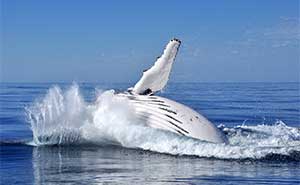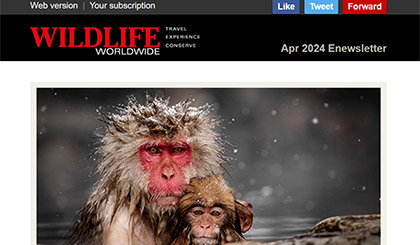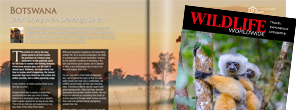Fraser Island is the world’s largest sand island, stretching for more than 123 kilometres in length and 22 kilometres wide. As a UNESCO World Heritage Site it constitutes a major part of Australia's natural and cultural heritage.
The island, and it's surrounding oceans, are a haven for wildlife. The land is home to 47 mammal species including the swamp wallaby, small-eared mountain possum and sugar glider. More than 354 bird species have been recorded here, and 79 species of reptiles including sand monitor, lace monitor, and 19 species of snake. Rare frog species, such as the "acid" frogs which have adapted to survive in the difficult environment, can also be seen and heard in the swamps.
Between July and November - migrating humpback whales can be seen in the waters of Hervey Bay in the protected lee of Fraser Island. Thousands of humpback whales travel from Antarctica, along the east coast of Australia, to give birth in the warm Northern Queensland waters each year. On their way back, they stop to rest and play and nurture their calves in the safe waters off the coast of Fraser Island. Dolphins, dugongs, turtles and rays also all inhabit the waters around the island.
Lying at the southern tip of the Great Barrier Reef on Australia's Nature Coast, the island is a place of exceptional beauty. Long white beaches are flanked by strikingly coloured sand cliffs, and over 100 freshwater lakes – some, such as Lake McKenzie, have crystal clear, sparkling, blue waters which you can immerse yourself in and then relax on the surrounding white sands.
Ancient rainforests grow in sand along the banks of fast-flowing, crystal-clear creeks. Indeed, this is the only place in the world where rainforests grow on sand dunes at elevations of over 200 metres. The island’s low wallum heaths are of particular evolutionary and ecological significance, with magnificent displays of wildflowers each spring and summer.
Immense sand blows and cliffs of coloured sands are part of the longest and most complete sequence of coastal dune systems in the world. They form a continuous record of climatic and sea level changes over the last 700,000 years. The highest dunes reach up to 240 metres above sea level. The Great Sandy Strait, which separates Fraser Island from the mainland, is a Ramsar Convention wetland. Here you can find rare patterned ferns, mangrove colonies, sea-grass beds, and as many as 40,000 migratory shorebirds. Rare, vulnerable or endangered species found here include dugongs, turtles, Illidge's ant-blue butterflies and eastern curlews.
View suggested itinerary











